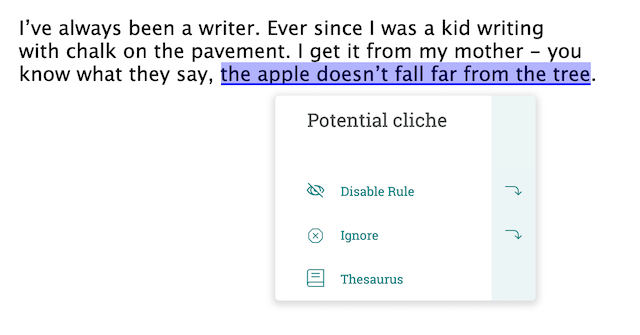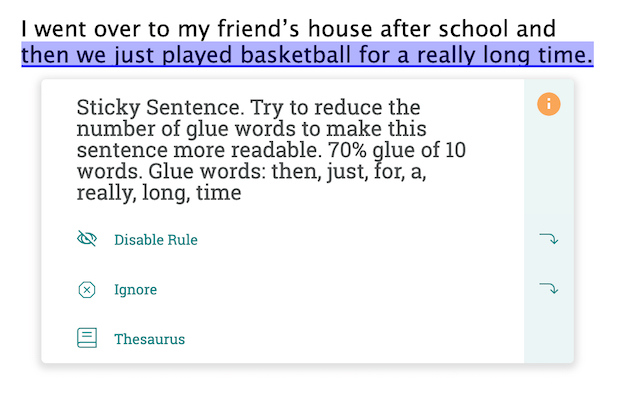
Now that the world is tentatively starting to open up again, people are beginning to get back into traveling for work. Many of us have found that the extra time saved by not having to commute has done wonders for our productivity. But I think there are ways to make your work travel - well - work!
Back in normal times, work travel had me spending a lot of time in planes, on buses, and (uncomfortably) in camp beds. Despite my hectic, road-warrior lifestyle, I still managed to flesh out ideas and continue writing.
This lifestyle isn’t always easy. Responsibilities that come with work travel can drain you, leaving little time to explore thoughts, let alone write them down. However, a few tools have helped me keep writing. Let's take a look at some of them.
Analog Method: Notebook
I’m not a note-taker. I never have been. Throughout my schooling, taking notes was like a foreign language. I knew it worked for my friends, but I could not understand it.
Over the last few years, I’ve found the allure as it pertains to writing. Keeping a physical notebook handy is a great way to capture thoughts as they occur. The key is to capture enough of the thought so you aren’t confused later when reading the notebook.
I jot down things people say, the outline of a story, or unique things I see. It’s better to capture these as they happen rather than try to remember them later.
Sometimes I capture these thoughts digitally (as I’ll discuss in a moment) but an analog notebook has the added ability to capture physical memories. I'll enclose ticket stubs, receipts, or anything else that can help piece together a larger story later.
Digital Methods
Day One Journal
I have used the Day One Journal app for over five years. At the end of each day, I write in the app on my phone and capture what happened throughout the day. I do this by answering three questions about the day.
These entries are often just for my own memories. Sometimes they develop into stories and essays of their own. For example, various entries containing commentary on photos were sewn together to form a detailed travel essay.
Notes
Like an analog notebook, the phone’s Notes app is a great place to capture quick ideas while traveling. While notes alone don’t make complete stories, they’re a great starting point.
While sitting on an airplane, I opened the Notes app to capture a reactionary thought. I read an article in the airline’s magazine and wanted to remember a few points. The thought evolved into an entire response which I posted to Facebook once an internet connection was available.
Ulysses
Everything I publish is written in the Ulysses app, which Kathy Edens has given an in-depth review.
While traveling, ideas developed in Day One or the Notes app are copied to Ulysses. There, I expand the ideas, add formatting, comments, and outlines. I typically have a dozen “works in progress” open in Ulysses that can be edited or expanded while on the go.
Before a recent trip, I began an essay exploring leadership themes and developed an outline in Ulysses. Throughout the trip, I witnessed a few things that became examples in the essay. This expanded the outline with real-world anecdotes that added life to the essay.
Editing and Publishing
I publish most of my writing on Medium. Ulysses exports drafts to Medium, which makes publishing easy. While publishing is possible from the phone or iPad while traveling, I still prefer proofing and editing on a larger screen.
Writing with my thumbs is still not as accurate as writing with all ten fingers, so mistakes occur. When home, I fire up Ulysses on my computer, which syncs with the phone version. After a read through, I spend time with the story in the ProWritingAid editor.
ProWritingAid is not your average grammar checker. It's like having a second pair of eyes read over your writing, catching errors that real copyeditors would point out. When writing time is short, having an editor on hand makes sure that your content is still great, every time. With blog posts that I've written on the go, I run my writing through three key reports. Even if you don't use an editing tool (though you totally should!), these are things to look out for when you've been writing quickly.
Repeats
If you're writing on the move, it can be hard to get in the zone. When the words do start flowing, you may find that you use certain words or phrases repeatedly because they're at the forefront of your mind. Repeats make your readers think "Didn't they just say that?" Your article will seem like it isn't going anywhere, and that's not how you develop a following.
ProWritingAid's Repeats check will look for repeated words, phrases and sentence starts so that you can identify and change them quickly.
Clichés
Clichés are great for getting words down on the page. While you're out and about, they act as a placeholder for what you want to say while you're beginning to flesh out your writing. But they shouldn't stay in your final draft. Clichés are lazy and unoriginal, and will make your writing sound just like everyone else's. Eliminating clichés from your writing will force you to think about your ideas and how you're putting them across.
ProWritingAid scans your document for clichés so you don't have to.

Sticky Sentences
What is a sticky sentence? There are words in English that have little meaning on their own, but are used to stick your sentences together. These are called glue words. If your writing has a high number of glue words, chances are your meaning is getting lost as your reader battles their way through the glue towards what you are trying to say.

Removing those glue words will make your writing easier to read. Sure, it might diminish your word-count, but the result will be a more polished piece of writing that readers will enjoy.
Publishing
Once everything feels right, I export the draft to Medium for publishing.
Final Thoughts
Traveling, even on your daily commute, enriches our lives and provides ample material for our writing. The key is to capture those moments without getting overwhelmed in the moment. Your writing will grow as will your ability to reflect on the experience.
Start editing like a pro with your free ProWritingAid account
When a reader sees a grammar error, they start to lose faith in the writer.
ProWritingAid is one of the best grammar checkers out there - but it's far more than that! The Editing Tool also looks at elements of structure and style that have an impact on how strong and readable your writing is.
More, it helps you learn as you edit, making you a better writer every time you use the program.

